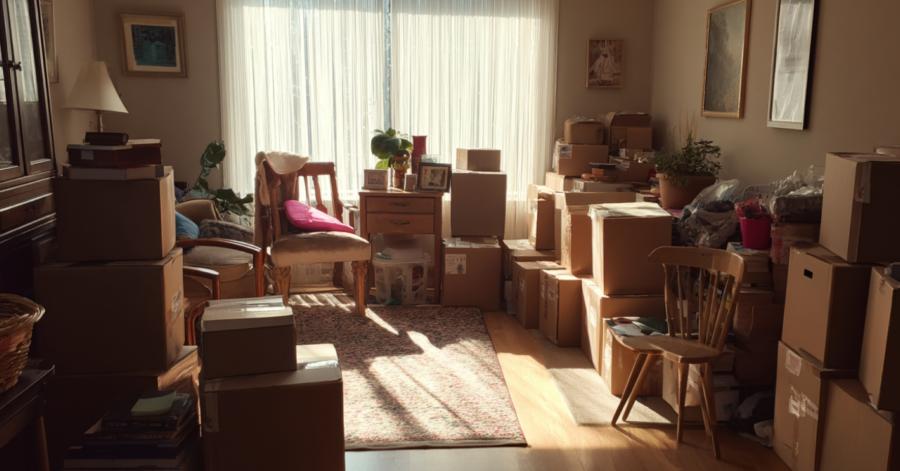There is a special vertigo to deciding what stays. Objects do not only occupy space; they carry conversations you had with people who are no longer around, arguments you lost, triumphs you forgot you celebrated. That makes sorting a practical job and a kind of pilgrimage—awkward shoes and all.
Setting Gentle Rules
Begin with rules you can live with. Rules are not prison; they are scaffolding. Pick three that feel achievable and stick to them like a security blanket: time limits, a fixed number of keepers per category, and a place for immediate decisions.A serious tone here. Without limits, decision fatigue arrives like a fog and the sensible become sentimental hoarders by accident. Short, enforced rules reduce the cognitive load and the emotional back-and-forth that usually robs a day of productivity.
Three-Box Method Made Human
This is not a trick—it’s a triage system with dignity. Label three boxes Keep, Donate, and Revisit. The Revisit box is crucial; it spares you immediate regret while preventing indecision from stalling the whole project.- Keep: items that earn their place daily or weekly.
- Donate: things someone else will use more than you will.
- Revisit: everything you need to sleep on before sealing the fate.
Timing Not Tears
Set a timer. Work in short, focused bursts—45 minutes is a friendly sprint. When the buzzer goes, walk away and drink water like a sensible animal. This rhythm prevents overwhelm and keeps the emotional temperature manageable.Humour is allowed in moderation. Consider wearing gloves when handling the object that always makes you cry. The psychological trick here is practical distance. Physical separation creates emotional breathing room.
When Sentiment Wins
Not every sentimental item is negotiable, and that is acceptable. Some objects are anchors and should remain. The aim is not ruthless efficiency; it’s a calibrated life-edit. Keep the heirlooms that actually carry meaning, not merely obligation.Photograph the Memory, Keep the Space
Sometimes the object isn’t the treasure; the memory is. Photograph items that matter but do not need to remain. A picture takes no shelf space and carries every ounce of nostalgia without the dust or the guilt.An object can feel like an obligation, especially when inherited. A photograph lets you preserve the story while allowing the item to continue its life elsewhere. The emotional weight stays with you; the cardboard box does not.
Decision Fatigue Is Real
There comes a moment where everything—every chipped mug, every expired loyalty card—suddenly appears important. That is fatigue masquerading as sentimentality. When your brain hits that point, stop.A serious reminder: the ability to decide diminishes over time. Your standards fade, and items that would have gone into Donate start sneaking into Keep like spies. Rest is not laziness; it’s strategy.
Invite a Witness (Preferably Someone Not Emotionally Attached)
An objective presence keeps things from spiralling. This person’s job is not to judge but to ask gentle questions like: “Do you use it, or do you just feel bad getting rid of it?”They don’t need to touch anything. They are simply the reality check that prevents you from keeping a broken lamp because “it might be a quirky project one day.”
The Guilt Objects
Every home clearance reveals items we keep out of guilt: the fondue set gifted by someone who barely knew us, the project we swore we would finish in 2014. Let guilt have a moment of silence and then show it the exit.You are not a storage facility for other people’s expectations. Objects are meant to serve your present life, not your past sense of obligation.
Designate a Memory Shelf
One shelf. Not a room, not a wing of the house. A single, intentional space where meaningful objects live. When it fills, you choose—either something leaves, or nothing new enters.This boundary transforms sentimentality into curation. The objects that remain become a small, concentrated display rather than a diffuse guilt cloud hovering over every drawer.
Letting Go Isn’t Losing
A calm tone here. A home clearance is often tied to grief, transitions, endings, beginnings. The emotional labour is real. What you release does not erase the person or the past. Memory and love are not indexed by volume.Letting go is an act of respect—toward the object, the history, and yourself. You are making room for life to continue forward-facing.
Parting With Purpose
When possible, let your outgoing items have a meaningful destination:- Donate to someone who will use them.
- Recycle responsibly wherever you can.
- Repurpose only if you’ll actually finish the project.
A Punny Send-Off
Eventually, you reach the moment where space appears. The floor becomes visible again. Cupboards close without negotiation. Your mind feels lighter, as though your thoughts finally have room to stretch their legs.Clearing a lifetime isn’t about erasing the past; it’s about giving the future somewhere to sit. And once the last box leaves, something else arrives—a kind of spacious relief that smells faintly like possibility. Call it the joy of letting clutter go to a better place.
In the end, less stuff means more room for living. And that’s the only thing worth keeping.
Article kindly provided by cleansceneservices.co.uk/house-clearance

